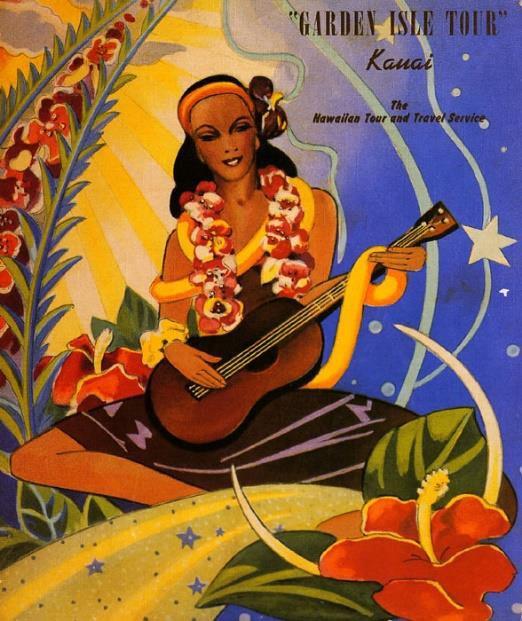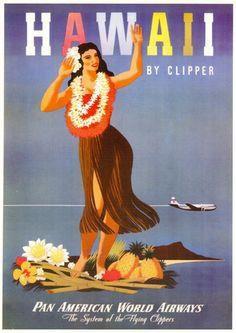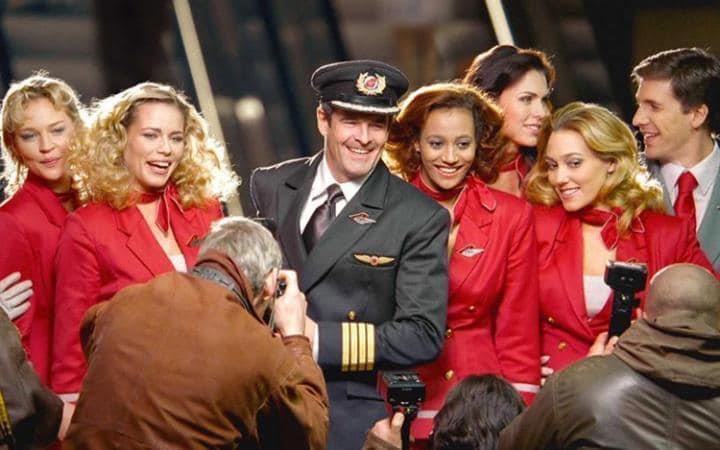Women in aviation and tourism: non-traditional career [PHOTO]
![Women in aviation and tourism: non-traditional career [PHOTO]](https://www.azernews.az/media/2017/05/18/women_in_aviation5.jpg)
By Zumrud Jalilova
The objective is to present the subject of gender issues in the workplace of the aviation industry and tourism. More specifically, the article addresses the continuing gender imbalance by making some relevant issues and challenges that women face pursuing career in the male-dominated industry more visible. The article raises both theoretical and practical issues, endeavouring to address the imbalance of women pilots in this occupation. It is also hoped it will encourage young women to identify and overcome the barriers to becoming a civilian pilot.
Women have been flying since the beginning of the twentieth century (Corn, 1979; Stepanski, 2012) and flying commercially for over four decades. It is 2017 and today in the world of globalisation and technology, seems like women are perceived as being as powerful as men in most parts of the developed world. However, there is still a great imbalance in one of the most intensely competitive industries that has a huge impact on global and national economies.
Women continue to be underrepresented in a global industry that provides transportation and employment of people and goods internationally and domestically. In the industry, that plays a significant role in manufacturing, logistics, hospitality, supply chains, and tourism (Saner, 2014). Speaking about tourism, it has become a crucial process in world affairs, generating income and profits for private companies, various businesses and governments, creating both well-payed careers and exploitive jobs, and alluring millions of people to visit other parts of the globe.
Tourism has become big business and the concept is very gendered. Gendered history shows that femininity referred to sticking close to home, and masculinity, has been defined as passport for travel. Some women, though, may have inadvertently reinforced the patriarchal link between unrespectable womanhood and geographical mobility with their own gestures of bold disobedience using bumper sticker on well-traveled vans in the 1980s: “Good girls go to heaven. Bad girls go everywhere” (Enloe, 2014; Douglas, 2004). Furthermore, a patriarchal version of nationalist pride for country’s beautiful women can pour fuel onto these “international beauty competitions” among countries and companies (Germain, 2012). Tempting people to spend money on traveling to particular countries, promoting tourism and willing to meet the expectations of foreigners by using women’s beauty and bodies. Business people know that a “tourist” can take multiple forms. Subsequently, it brings us to sex trafficking. Investigating developed sex tourism – men traveling to Thailand, to Cambodia, to Cuba, to Ukraine, to the Dominican Republic. One should also ask how voluntary, intimidated or coerced are the women in sexualised commerce and pay attention to terms like sex workers, trafficked women, sex slaves, and women in prostitution, which can confuse anyone who hasn’t done detailed research (Chin, 2013; Barry, 2007).
From the very beginning, tourism has been a powerful drive for global integration and formula for development. The question is where do women stand in this overwhelmingly profitable industry? When was the last time that you heard “this is your captain speaking” from a female voice? To answer this simple question many would be racking their brains. The reason for it is that there really are not that many women pilots (Anderson, 2014). Most of the people remember women as flight attendants also known as stewardesses, air hostesses, or cabin attendants that are employed by airlines to ensure the safety and comfort of passengers aboard commercial flights, on select business jet aircraft, and on some military aircraft (Grossman, 2010). Today hundreds of women are hired to work as service personnel by different airlines but not as pilots. What we see today are masculinized businesses with feminization of airline cabin crews, which is not perceived as simply oppressive by most of the women hired to be flight attendants (Colgan and Tomlinson, 1996). Enloe (2014, p. 66) claims that “many of these women saw their employment as comfortably meshed with respectable femininity and as opening doors for paid careers and global travel”. However, there have been two radical changes for many women working as part of the cabin crew: the aggravation of their in-flight working conditions and the growing number of male executives who attempted to sexualize stewardesses and their services for the sake of corporate mass marketing (Enloe, 2014).
Gender matters. It is very comfortable nowadays for many commentators to narrate the story of women facing challenges as specific cases or refer to gendered professions and classic example of women’s physical deficiency or immobility. Furthermore, women may be mentioned, filmed and photographed, yet they are rarely interviewed by mainstream journalists about their career challenges and complex experiences in the aviation or tourism industry (Davey and Davidson, 2000). Men are much more likely to be visible and interviewed about their experiences by journalists (Ashcraft, 2005). It is the premeditated manipulation of ideas about girls and women, and of notions of femininity that empowers those who try to cheapen women’s labour and represent their roles as secondary and auxiliary referring to “natural” differences that characterise and define the priorities, roles, payments and choices of people. In the Absent Aviators: Gender Issues in Aviation, Bridges and Neal-Smith (2016) describe the conducted studies to explain the prejudices and supposed differences between men and women claimed by some people. They has investigated that no significant differences were demonstrated during the testing of women in comparison to their male counterparts, even across the menstrual cycle in women on the contraceptive pills.
Historically male-dominated civil and military aviation industry restricted women from general aviation, i.e. private planes, or support jobs, (prior to the 1970s in the U.S. and Europe). When Yvonne Pope Sintes became Britain’s first commercial airline captain in 1972, having worked her way up from being an air stewardess, she was told by a male pilot that if a woman ever joined he would resign. Faced with these challenges, two women working as flight attendants for a U.S. airline organized Stewardesses for Women’s Rights to change the sexist presumptions and stereotypes held by both their corporate employers and their sexually harassing passengers (Bagilhole, 2002). Openly identifying themselves with the wider women’s movement, the activists took as their motto: “Fly me? Go fly yourself!”. This initiative helped other women with equal pay, the right to fly after they get married, protection against sexist uniform requirements and guarantees that they would be treated as the safety professionals they were (Barry, 2013; Enloe, 2014).
Yet today, four decades later, “women in aviation” story still surprisingly hits the headlines with such things as the woman who, in 2013 refused to board a Miami to New York flight because the pilot was a woman (Morris, 2015). People still do not trust female pilots since aviation has been traditionally portrayed as a split-gender workplace. It shows that there are still likely to be many reasons that contribute to this imbalance including public perceptions of what constitutes typically ‘female’ or ‘male’ professions and the perceived or actual inflexibility of the job.
The structure of international aviation and tourism has needed patriarchy to survive and thrive but the reality proves that it does not and not anymore. Royal Brunei Airlines' first all-female pilot crew armoured female sentiments by landing a plane in Saudi Arabia in 2016 – where women are not even allowed to drive. What an achievement in masculine-oriented occupation! Another example is all-female crew that has operated the world's longest continuous flight in March 2016 from Delhi to San Francisco (Joshi, 2016).
On the other hand, estimates from the International Society of Women Airline Pilots (ISA) show about 4,000 women pilots worldwide, of about 130,000, that is just over 3%. Another estimate, by EasyJet, puts the balance at 5%, with 6% of its own flying staff female. British Airways says about 6% of its pilots are women – that is 200 out of 3,500 (Morris, 2015). While, there are drives to encourage more women into the industry, the cockpit remains one of the most staunchly masculinist spaces in industrial employment, and the reasons for a highly gendered realms are a human problem, management issue, political interests and tourism businesses (Gibbon, 2014).
Piloting, Caucasian Style (referring to a movie: “Kidnapping, Caucasian Style” directed by Leonid Gaidai).
Now let us look at the aviation history of Azerbaijan. A brilliant example of a woman becoming the first female student and pilot in the Caucasus, Southern Europe and the Middle East. Leyla Mammadbayova was the only female among the 22 accepted applicants to study the aviation course. After her graduation, she was chosen to be trained in Moscow, which was her lucky ticket to find her own destination. She was aware of how dangerous step she has taken because women were condemned and kept away from male dominated industries.
She was urged to cut her long hair (Azerbaijani women had to keep long hair as a symbol of their femininity) as it posed a danger in an open cockpit. On 17 March 1933, Mammadbeyova became the second woman parachutist after Nin Komneva, in the Soviet Union having jumped from a Polikarpov Po -2 aeroplane at Moscow's Tushino Airfield. In 1934, she won the parachute jump competition among representatives of the South Caucasus nations. By 1941, she was Squadron Leader of the Soviet Army. Back in Azerbaijan, Leyla continued her career as a pilot and instructor at the Baku Airclub. For being a mother of six, she was refused to fight in World War II. Nevertheless, her true free spirit motivated to launch her own glider and parachutist courses, where she trained hundreds of combat pilots and around 4,000 paratroopers. Despite her professional contributions, the award that she received was a Motherhood Medal to be considered the most prized one for raising six children and having a successful career, which shows the enforced idea of prioritising motherhood over any other roles or contributions of women through their lifetime. Leyla Mammadbayova has been a living icon symbolising freedom, spirit and energy who surmounted the stereotypes of the time and became an inspiration for Azerbaijani directors, artists, writers and generations to come.
References:
1. Anderson, S. (2014) Who do you trust more, male or female pilots? http://www.sunshine.co.uk/news/who-do-you-trust-more,-male-or-female-pilots-105.html. Accessed February 15, 2017.
2. Ashcraft, K. L. (2005) Resistance through consent? Occupational identity, organizational form and the maintenance of masculinity among commercial airline pilots Management Communication Quarterly 19, pp. 27-90.
3. Bagilhole, B.M. (2002) Women in Non-traditional Occupations: Challenging Men. New York: Pelgrave, Macmillan.
4. Barry, Femininity in Flight, 174-209. See also VictoriaVantoch, The Jet Sex: Airline Stewardesses and the Making of an American Icon Philadelphia: University of Pennsylvania Press, 2013.
5. Bridges. D. “Absent Aviators: Gender Issues in Aviation” in Bridges D., Neal-Smith J. and Mills J. Alberts (eds) New York Routledge, 2016.
6. Conquering the Skies Baku Magazine, March-April 2011, No. 2 (22), p. 72.
7. Colgan, F. and Tomlinson, F., (1996). Women in book publishing: A ‘feminised’ sector? In: S. Ledwith and F. Colgan (eds), Women in Organizations: Challenging Gender Politics, London: Macmillan, pp.44-77.
8. Corn, J. J. (1979) Making flying ‘thinkable’: Women pilots and the selling of aviation, 1927- 1940 American Quarterly 31(4), pp. 556-571.
9. Davey, C. and Davidson, M. (2000) The Right of Passage? The Experiences of Female Pilots in Commercial Aviation. Feminism and Psychology 10(2), pp. 195-225.
10. Davey, C.L. (2004). The Impact of Human Factors on Ab Initio Pilot Training. Gender, Work and Organization, 11(6).
11. Douglas, D. (2004) American Women and Flight since 1940 University of Kentucky Press, Lexington.
12. Enloe C. (2014) “Bananas, Beaches and Bases: Making Feminist Sense of International Politics” Berkeley, Los Angeles, London: University of California Press.
13. Gadirova I. The Proprietress of the Sky in Nash Vek («Наш век») 7 May 2004. Accessed February 15, 2017: http://nashvek.media-az.com/257/memory.html.
14. Germain, M. L., Herzog, M. R. and Hamilton, P. R. (2012) Women employed in male dominated industries: lessons learned from female aircraft pilots, pilots-in-training and mixed-gender flight instructors. Human Resource Development International, 15(4), pp. 435- 453.
15. Gibbon, D. (2014). Difficult, Dangerous, Not a Job for Girls: Factors Impacting Women and Girls` Orientation Towards Pilot Careers, in Bridges, D., Neal-Smith, J., and Mills, A.J. (eds), Absent Aviators, Gender Issues in Aviation. Chapter 2.
16. Grossman, Dan (July 9, 2010) "The First Flight Attendant: Heinrich Kubis, 1912". Airships: The Hindenburg and other Zeppelins. Accessed February 15, 2017.
17. Joshi S. An all-female crew operated the world's longest continuous flight on Air India, March 8, 2016. Accessed February 17, 2017. http://mashable.com/2016/03/08/air-india-longest-flight-women-crew/#MHc7ynwVwgqw.
18. Katila, S. and Merilainen, S. A. (1999) Serious Researcher or Just Another Nice Girl? Doing Gender in a Male-Dominated Scientific Community. Gender, Work and Organization 6(3), pp. 163-173
19. Kohn-Stuart, R. (2000). Gender differenced in the cockpit. In: 2000 Asia-Pacific Women in Aviation Conference, Canberra, Australia. Lepore, M. (2011).
20. Mahmudova N. Leyla Mammadbeyova: Memories of the First Woman Pilot in East, 2016. Accessed February 17, 2017.
21. Morris H. Why are there so few females? in The Telegraph, 2015. Accessed February 17, 2017. http://www.telegraph.co.uk/travel/news/Why-are-there-so-few-female-pilots/.
22. Pawlowski, A. (2013). Why aren’t more women airline pilots? CNN October 30, 2013. Accessed February 15, 2017. http://edition.cnn.com/2011/TRAVEL/03/18/female.airline.pilots/
23. Saner, E. (2014) Female pilots: a slow take-off. The Guardian January 13, 2014 http://www.theguardian.com/lifeandstyle/2014/jan/13/female-pilots-woman-flying-aeroplane. Accessed February 15, 2017.
24. Simeone, A. (1986) Academic Women: Working Towards Equality. South Hadley, Massachusetts, J F Bergin and Garvey. Sitler, R. (2004) Gender differences in learning to fly. In M. A. Turney (Ed.), Tapping diverse talents in aviation: Culture, gender, and diversity Aldershot, Ashgate. pp.77-88.
25. Stepanski, L. M. (2012) Like Sportive Birds: The Girl Aviator Series and the Culture of Flight in America, 1911-12 The Journal of Popular Culture 45(4), pp.769-788.
26. Women in Aviation [WIA]. (2012) Women in Aviation: The Facts. https://www.wai.org/resources/facts.cfm. Accessed February 17, 2017.
27. Women in Aviation and Space History: https://airandspace.si.edu/explore-and-learn/topics/women-in-aviation/. Accessed February 17, 2017.
---
Follow us on Twitter @AzerNewsAz




